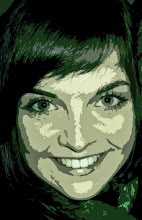In tutorial two we looked at camera use and applications. We got to play around with the camera functions and discussed the usefulness of this technology in the occupational therapy field.
Here is the tutorial worksheet that had to be filled in:
1) “A new technology is rarely superior to an old one in every feature.” Briefly discuss this statement in relation to digital camera technology. What would you consider to be some of the pluses and minuses of digital camera technology holds in relation to more traditional film based cameras?
These days, if you do not have a backup, if something happens such as your computer crashing then you lose all your photos and there is no way to get them back. However with film cameras photos can also be lost such as if they got burnt.
Today a mass amount of photos are being taken, often unnecessary volumes which means that they are not valued as much. Developed photos were much more special.
There is the opportunity to save money these days because with digital cameras you can take as many photos as you wish but select only a few to be developed. Film cameras can work out very expensive because the whole role has to be developed.
Digital cameras has made it a lot easier to share photos because they can be posted on the internet or sent via email or cell phone. This has made communication and design more styled and effective. Unfortunately film cameras do not provide these type of opportunities.
Digital camera photos are much easier to store and take up much less space than those of film cameras.
2) List some of the ways that digital images can be stored, transferred and manipulated using other communications technology.
There are various ways to store and transfer digital images. Computers are the main ways but there are several others such as internet sites (e.g. flickr or facebook), email, memory sticks, CDs and even through cell phones.
There are several internet sites and software programmes that allow users to manipulate photos. A very commonly used programme is Adobe Photoshop.
3) Given the prevalence of image capturing devised, and thinking about the issues discussed in tutorial one, consider what sort of ethical issues arise with their use.
Again the issue of privacy and confidentiality arises. Digital images captured can be shown to the whole world very rapidly which may have a huge impact on these factors.
Digital images can also be stolen and used for different purposes.
As well as that images are regularly manipulated which can be very deceptive, giving a false sense of events, people or things.
4) Briefly discuss some of the ways that digital images could, or are, being used in occupational therapy practice (include references and links to any web sites, or blogs you might come across).
In practice it is common to see occupational therapists take photos of environments that need to be altered because this captures exactly what they need to remember and helps them to plan after they have left the site.
Often photos are also used in things such as pamphlets that go out to patients that explain or display equipment etc.
Photos are also a useful visual tool to show clients specific steps in a task.
5) Provide a brief summary of the services offered by Flickr.com
Flickr is a video and image hosting website and is somewhat of an online community. Users can store, organise and share photos in a quick and easy way. This is especially useful if they want to share photos with people that live far away.
6) Name one other photo storage website which offers a service similar to Flickr.com
Photo galaxy is another website that offers a similar service to Flickr.com
7) Explain what the difference is between digital and optical zoom.
Optical zoom; works like a zoom lens on a film camera. As it is zoomed the lens changes focal length and magnification which means that image quality is high throughout the zoom range.
Digital zoom; crops the image to a smaller size which after it enlarges this cropped section to fill the frame. This means the quality decreases greatly.
Subscribe to:
Post Comments (Atom)

No comments:
Post a Comment